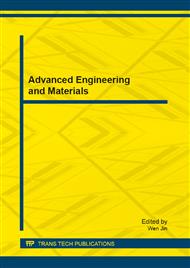p.435
p.440
p.447
p.452
p.457
p.462
p.468
p.474
p.481
A Study on the Thermal Load Saving of an University Office Building with Passive Items
Abstract:
Curtain wall system shows good performance for daylighting and openness, but it also causes deterioration of thermal comfort because it brings too much solar irradiation to interior space. So in this study, to reduce heating and cooling loads, some passive items, such as window-wall ratio, air exchange rate, outdoor louver, and composition of window glass were adopted to a university office building and the monthly heating-cooling loads were evaluated by EnergyPlus simulation. The actual energy usages were compared to loads of simulation data to verify simulation accuracy and real data and simulation result showed good match. As a result, air exchange rate and interior setpoint temperature influenced on thermal loads more than the other passive items.
Info:
Periodical:
Pages:
457-461
Citation:
Online since:
February 2013
Authors:
Keywords:
Price:
Сopyright:
© 2013 Trans Tech Publications Ltd. All Rights Reserved
Share:
Citation:


